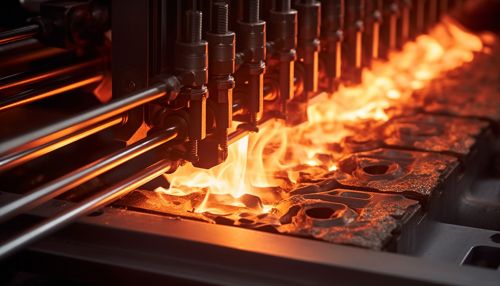Thermal Expansion
Introduction
Thermal expansion is the tendency of matter to change its shape, area, volume, and density in response to a change in temperature, usually an increase. It is a fundamental principle in the field of thermodynamics, the study of heat and temperature and their relation to energy and work.
Fundamentals of Thermal Expansion
Thermal expansion occurs when heat is applied to a substance, causing the kinetic energy of its particles to increase. As a result, the particles move more rapidly and occupy a larger volume, leading to an expansion of the substance. This phenomenon is described by the coefficient of thermal expansion, a measure of the degree to which a material expands upon heating.


Types of Thermal Expansion
There are three basic types of thermal expansion: linear, area, and volumetric.
Linear Thermal Expansion
Linear thermal expansion is the tendency of a material to expand in length with a rise in temperature. The degree of expansion divided by the change in temperature is called the material's linear expansion coefficient and is usually denoted by the Greek letter alpha (α).
Area Thermal Expansion
Area thermal expansion, often referred to as superficial expansion, is the tendency of a material to expand in area with a rise in temperature. The degree of expansion divided by the change in temperature is called the material's area expansion coefficient and is usually denoted by the Greek letter beta (β).
Volumetric Thermal Expansion
Volumetric thermal expansion is the tendency of a material to expand in volume with a rise in temperature. The degree of expansion divided by the change in temperature is called the material's volumetric expansion coefficient and is usually denoted by the Greek letter gamma (γ).
Factors Influencing Thermal Expansion
Various factors can influence the degree of thermal expansion in a substance. These include the nature of the material, the initial temperature, the amount of heat supplied, and the pressure conditions.
Material
Different materials have different coefficients of thermal expansion. For example, metals generally have high coefficients of thermal expansion, meaning they expand significantly when heated. In contrast, ceramics have low coefficients, meaning they expand less when subjected to the same amount of heat.
Initial Temperature
The initial temperature of a substance can also affect its thermal expansion. A substance at a higher initial temperature will generally expand more than the same substance at a lower initial temperature when subjected to the same amount of heat.
Heat Supplied
The amount of heat supplied to a substance also influences its thermal expansion. The more heat supplied, the more a substance will expand.
Pressure Conditions
Pressure conditions can also affect thermal expansion. In general, substances expand more under low-pressure conditions and less under high-pressure conditions.
Applications of Thermal Expansion
Thermal expansion has numerous applications in various fields, including engineering, construction, and physics.
Engineering
In engineering, understanding thermal expansion is crucial for designing structures and machines that can withstand changes in temperature. For example, bridges are designed with expansion joints that allow them to expand and contract without causing structural damage.
Construction
In construction, thermal expansion is taken into account when selecting materials for building. For instance, concrete and steel have similar coefficients of thermal expansion, which is why they are often used together in construction projects.
Physics
In physics, thermal expansion is used in various experiments and calculations. For example, it is used in the design of thermometers, where the expansion and contraction of a liquid with temperature changes allows for the measurement of temperature.
